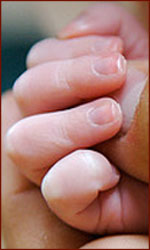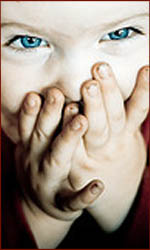|
APRIL 21, 2009
The Hands of Children: fingernail disorders in childhood (1/2)
Fingernail disorders are quite often a cosmetic problem, but sometimes a fingernail disorder may be important signs of a congenital or systemic disease.
Author: Dimitrios K Sotiriadis
INDEX:
• NAIL DISEASE IN CHILDHOOD
• NORMAL NAIL DISORDERS IN THE HANDS OF CHILDREN
• NAIL DISORDERS IN NEWBORNS & INFANTS (next page)
• COMMON DISEASES CAUSING NAIL CHANGES IN CHILDHOOD (next page)
|

